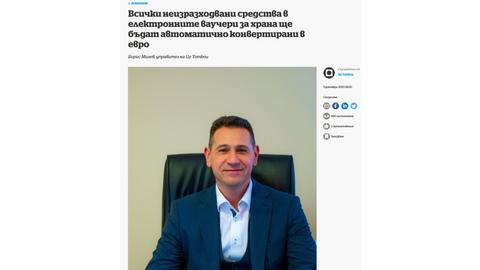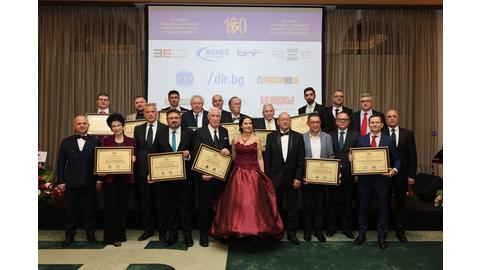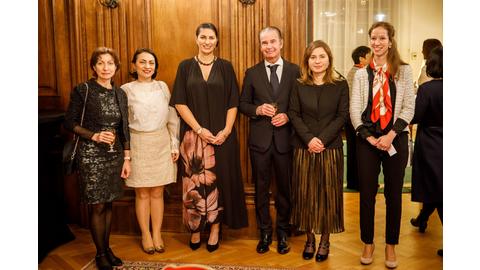Actus des entreprises
Peterka Partners: Changes to Rules on Vertical Agreements in EU as of 1 June 2022

Vertical agreements are agreements for sale and purchase of goods or services between companies operating at different levels of the production or trade chain. Distribution agreements are a very typical example of vertical agreements even though the notion is broader.
Vertical agreements are subject to certain limitations both at the EU and national level. In particular, agreements that contain restraints on the buyer or the supplier preventing/restricting/distorting the competition that have an appreciable effect on trade between Member States are covered by Article 101 of the Treaty on the Functioning of the European Union (“TFEU”). Where such agreements do not have an appreciable effect on trade between Member States, i.e., if they affect, rather, national/regional markets they would normally be covered by similar provisions in the national law of the respective Member State.
Such agreements are in principle prohibited, they are null and void and the parties to them are exposed to other serious consequences such as damage claims and substantial fines up to 10% of turnover.
These agreements may be exempted from the prohibition if they create sufficient benefits to outweigh the anti-competitive effects. A major piece of legislation which creates a safe harbour and defines which vertical agreements are exempted from the prohibition is Regulation (EU) No 330/2010 (“VBER”).
In a nutshell, the VBER exempts vertical agreements between companies with market shares not exceeding 30% provided they do not contain hardcore restrictions such as resale price maintenance.
Agreements that are not exempt by the VBER are subject to individual assessment under the European Commission’s Guidelines on Vertical Restraints.
The VBER and the Guidelines on Vertical Restraints are now being replaced with effect as of 1 June 2022 by a new Regulation 2022/720 of 10 May 2022 (“New VBER”) and new Guidelines on Vertical Restraints approved on the same date (“New Guidelines”).
The New VBER preserves the main concept of a safe harbour for vertical agreements not containing hardcore restrictions provided the market share held by the supplier does not exceed 30% of the relevant market on which it sells the contract goods or services and the market share held by the buyer does not exceed 30% of the relevant market on which it purchases the contract goods or services.
Yet, there are a number of changes which deserve attention and among those we would outline the following:
i. Application of Exemption to Dual Distribution
The VBER exempts, subject to the general requirements under VBER, also non-reciprocal vertical agreements between competitors in cases of dual distribution, e.g., when the supplier is a manufacturer as well as a distributor of goods, while the buyer is a distributor which does not compete at the manufacturing level.
With the New VBER, this exemption already covers cases where the supplier is not a manufacturer but also a wholesaler or importer of the respective goods. The exemption also applies to suppliers that are providers of services at several levels of trade.
The exemption will however not apply to information exchange between the parties that is not directly related to the implementation of the agreement or that is not necessary to improve the production or distribution of the contract goods or services. Further details as to the exchanges that can be considered exempted (and vice versa) are contained in the New Guidelines.
The exemption above will not apply to agreements between providers of online intermediation services with hybrid functions (providers of online intermediation services which also sell goods or services in competition with the undertakings to which they provide online intermediation services) and such competing undertakings.
ii. Exclusive Distribution
Exclusive distribution is a widely used tool where the supplier allocates a territory or a customer group exclusively to the buyer and/or reserves it to itself, while restricting other buyers from selling into the exclusive territory or to the exclusive customer group.
Exclusive distribution agreements are generally exempted by the VBER (where the 30% market share threshold is observed and they do not contain any hardcore restrictions; passive sales to the exclusive territory/group should be allowed in any case).
We’d mention two developments related to exclusive distribution under the new pack of legislation.
First, it sets the rule that the exclusive allocation should be done to a maximum of five distributors per exclusive territory or customer group. The New Guidelines indicate that a higher number would be related to an increased risk that the exclusive distributors may free-ride on each other’s investments, thereby eliminating the efficiency that exclusive distribution is intended to achieve.
Second, the New VBER makes it clear that exclusive distribution systems would be exempted also if suppliers limit active sales to an allocated exclusive territory/group not only by their buyers but also by the direct customers of their buyers (passing-on further down the distribution chain beyond the direct customers is not permitted).
iii. Selective Distribution
A provision that is similar to the one concerning exclusive distribution is also introduced for selective distribution, i.e., customers of distributors in the selective distribution network may also be restricted to sell (and this covers both active and passive sales) to unauthorized resellers in a territory where the supplier operates a selective distribution system.
Further, a supplier is clearly allowed to restrict active or passive sales by exclusive distributors and their customers to unauthorised distributors located in another territory where the supplier operates a selective distribution system.
iv. Online Sales
As a follow up to certain case law, the New VBER sets the rule that the prevention of the effective use of the internet by buyers or their customers to sell the contract goods or services is a hardcore restriction.
Examples of restrictions that cannot be imposed in this respect include the prevention of the buyer from establishing or using its own online store, the requirement on the buyer to sell the contract goods or services only in a physical space or in the physical presence of specialized personnel, the requirement on the buyer to prevent customers located in another territory from viewing its website or online store, etc.
Restrictions on online advertising that do not have the object of preventing the use of an entire online advertising channel are permitted, e.g., requirements that online advertising meets certain quality standards or includes specific content are also permitted.
On the other hand, it is not allowed to prevent the use of an entire online advertising channel, e.g., price comparison tools or search engines as long as their use is not a targeted form of advertising, i.e., a form of active selling.
Also, the New VBER makes it clear that a provider of online intermediation services is a supplier under the regulation. Among other things, this results in the conclusion that these providers, in principle, cannot qualify as agents for the purposes of applying the rules on vertical restraints.
Further, Article 5 (1) d) of the New VBER excludes from the exemption any direct or indirect obligation causing a buyer of online intermediation services not to offer, sell or resell goods or services to end users under more favourable conditions using competing online intermediation services. Thus, such parity clauses where, e.g., a certain online platform/marketplace would require from businesses at least the same conditions as those applied for sales through other platforms/marketplaces would not benefit from the exemption.
With respect to pricing, the New Guidelines (unlike the approach in the previous guidelines) indicate that it is allowed for suppliers to set different wholesale prices for the same buyer depending on whether the products would be resold online or offline, insofar as the object of such requirement is to incentivize or reward the appropriate level of investments for the respective sales channel.
The above represents merely a selection of the developments under the new rules on vertical restraints. While, strictly speaking, the amendments are at present introduced for agreements with effect on trade between the Member States it can be expected that national rules governing the same matter will be soon aligned to cover also vertical relationships of purely national/regional importance. It is reasonable for all businesses to review their agreements in the context of the modified rules and consider potential steps aimed at compliance with the new legal framework.
* * *
The article was prepared by Mr. Plamen Peev, Partner and Director at PETERKA & PARTNERS Bulgaria. No information contained in this article should be considered or interpreted in any manner as legal advice and/or the provision of legal services. This article has been prepared for the purposes of general information only. PETERKA & PARTNERS does not accept any responsibility for any omission and/or action undertaken by you and/or by any third party on the basis of the information contained herein.














